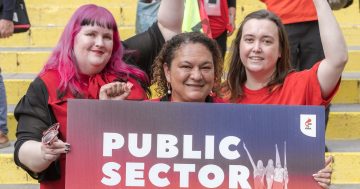 New data from the Workplace Gender Equality Agency (WGEA) has found that Australian employers were choosing an ‘all roles flex’ model for employees, allowing their staff to determine how, where and when they work.
New data from the Workplace Gender Equality Agency (WGEA) has found that Australian employers were choosing an ‘all roles flex’ model for employees, allowing their staff to determine how, where and when they work.
Director of WGEA, Mary Wooldridge said a new voluntary question in the Agency’s 2021-22 Employer Census asked whether employers had implemented an ‘all roles flex’ approach to flexible work, with a response provided by 78 per cent of the nearly 5,000 reporting employers.
“Of those, 38 per cent have implemented an ‘all-roles flex’ approach, ensuring the focus is on work output and outcomes – not hours spent in the office,” Ms Wooldridge said.
“However, the rates of ‘all roles flex’ offered varied significantly across industry types, with 48 per cent of mixed-gender industry employers offering this flexibility, compared to 30 per cent of male and female-dominated industries,” she said.
“Male and female-dominated industries are more likely to require a physical presence in the performance of duties, such as nursing, disability care, construction, mining and farming, which may offer an explanation on their comparatively slow uptake.”
Ms Wooldridge said ‘all roles flex’ was among the priority actions that Australian and international researchers found could drive progress towards gender equality.
She said employers needed to look beyond working from home when thinking about flexibility in the workplace, with research showing that nine in 10 employees were looking for flexibility.
“Flexible work is a key driver for gender equality, but employers should be creative to enable their employees to have flexibility that meets their specific needs,” the Director said.
“Innovative actions we’ve seen from employers include creating shifts specifically within or outside of school hours and offering job sharing or part-time work arrangements for managerial or executive roles,” she said.
“These types of measures make it easier for men and women to equally participate in the workforce – whether that’s from the office or home.”
Ms Wooldridge said the full 2021-22 Gender Equity Scorecard would be published by WGEA early next month (December).











